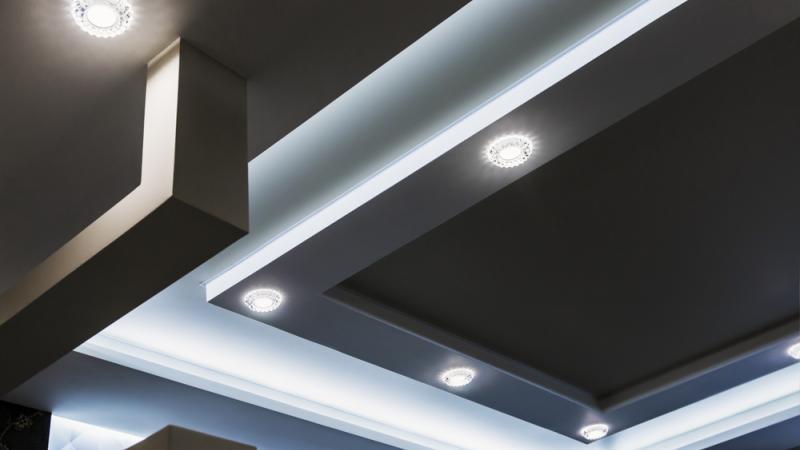
What is a Plafond? The Importance of Ceiling Design and Decoration
In construction and interior design, ceilings are often an overlooked but equally important element. Plafond, or ceiling, is one of the key elements that define the atmosphere of a space. A well-designed plafond not only serves a functional purpose but also enhances the aesthetics of a room. But what exactly is a plafond, and why is it so important in interior spaces? In this article, we’ll explore the different types of plafonds and their uses in various spaces.
What is a Plafond? The Role and Importance of Ceilings
A plafond is the French term for ceiling, but it refers to much more than just the physical structure. It also encompasses the aesthetics and functionality of the ceiling, making it an essential element in interior design. A plafond, therefore, refers not only to the ceiling itself but also to the ceiling finishes or decorative features that contribute to the overall look and feel of a room.
Types of Plafonds
There are various types of plafonds that can be used depending on the purpose and aesthetic preference. Here are some of the most common types of ceilings:
- Flat Ceilings: Flat ceilings are the most common type used in interior design. These ceilings are typically made from plasterboard or gypsum boards and provide a clean, minimalist look. Flat plafonds are ideal for modern spaces and offer flexibility in terms of decoration and lighting.
- Suspended Ceilings: Suspended ceilings, also known as drop ceilings, are installed below the main ceiling using panels made from gypsum, metal, or acoustic materials. These ceilings are ideal for hiding utilities like wires and pipes, and they can also provide sound insulation and fire resistance.
- Beamed Ceilings: Beamed ceilings are often used in rustic or industrial-style interiors. These ceilings feature exposed wood, **conconcrete, or metal beams, adding a stylish and warm atmosphere to large spaces like living rooms or loft apartments.
- Decorative Ceilings: Decorative ceilings feature intricate designs and ornamental elements such as moldings, patterns, or recessed lighting. These ceilings are often used in high-end spaces like luxury hotels, restaurants, and lobbies to create a more sophisticated look.
- Fire-Resistant Ceilings: Fire-resistant ceilings are essential in buildings where fire safety is a priority. These ceilings are made with materials that help slow the spread of fire, providing added safety in commercial, residential, and industrial buildings.
- Soundproof Ceilings: Soundproof ceilings are commonly used in spaces where noise reduction is crucial. These ceilings often feature acoustic panels or suspended designs that help prevent sound from traveling between rooms, making them ideal for offices, music studios, and apartments.
Applications of Plafonds
Plafonds are not just aesthetically pleasing but serve multiple purposes depending on the space and needs. Here are some examples of where plafonds are commonly used:
- Homes: In living rooms, bedrooms, bathrooms, and kitchens, plafonds can be used for both decorative and functional purposes, providing aesthetic appeal and practicality.
- Offices: Suspended or soundproof ceilings are common in office spaces to improve acoustics and hide electrical systems.
- Commercial Spaces: Plafonds are widely used in restaurants, shopping centers, and hotels, where aesthetics and functionality are equally important.
- Public Spaces: Large venues such as concert halls, cinemas, and sports arenas often use special plafond designs to address both aesthetic needs and acoustic requirements.
Benefits of a Plafond
- Aesthetic Appeal: Ceilings play a significant role in shaping the overall look of a room. Decorative plafonds add elegance and sophistication to interiors, creating a more visually appealing space.
- Sound Insulation: Suspended or soundproof ceilings help reduce noise levels and create a quieter environment. This is particularly beneficial in offices or apartments where noise can be disruptive.
- Fire Safety: Fire-resistant plafonds contribute to overall building safety by slowing the spread of fire. These ceilings are essential in meeting safety regulations and ensuring the protection of occupants.
- Energy Efficiency: Some plafond types provide thermal insulation, helping to maintain the internal temperature of a space. This can lead to better energy efficiency and lower heating or cooling costs.
Conclusion
Plafonds are essential elements in modern interior design, offering both functional and aesthetic benefits. Whether you are looking for sound insulation, fire safety, or simply want to enhance the visual appeal of a space, choosing the right plafond is crucial. From sleek flat ceilings to ornate decorative designs, plafonds can transform any interior, making it more comfortable, stylish, and practical.
Whether it’s a home, office, or commercial space, the right ceiling design can make a significant difference in the overall feel of a room.